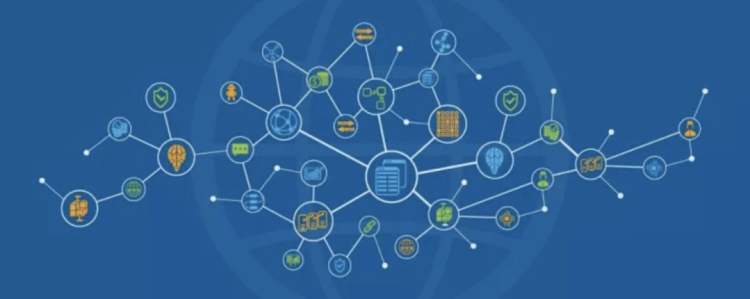Introduction
Traditional identity and access control systems depend on centralized entities such as governments, corporations, or identity providers. These entities store user credentials, verify identity claims, and manage access to services. However, centralized systems have several inherent weaknesses, including the risk of single points of failure, user data breaches, surveillance, and limited interoperability.
Decentralized networks offer a fundamentally different approach. By removing centralized intermediaries and placing control in the hands of users, decentralized identity systems aim to provide secure, privacy-preserving, and interoperable identity verification and access control mechanisms. This article explores how decentralized networks accomplish this, the technologies involved, and the challenges that must be addressed.
Limitations of Centralized Identity Systems
Centralized systems suffer from several well-known drawbacks. First, they are vulnerable to data breaches, as all user information is stored in centralized databases. Second, they often require users to share excessive personal data, which can lead to loss of privacy. Third, identities are platform-specific, making them non-portable and creating vendor lock-in. Finally, these systems rely on trust in centralized authorities, which can be compromised or misused.
Decentralized Identity: Principles and Architecture
Decentralized Identity, often referred to as DID, is a user-centric model where individuals control their own digital identities without depending on a central issuer or authority. The key components of decentralized identity systems include decentralized identifiers, verifiable credentials, and decentralized public key infrastructure.
Decentralized identifiers are unique strings linked to cryptographic key pairs. Unlike traditional usernames, they are not issued by a central entity but are generated and controlled by users themselves. Verifiable credentials are cryptographically signed attestations issued by trusted entities, such as universities or government bodies. These credentials can be presented by users to prove claims such as age, citizenship, or educational qualifications. The validity of these claims can be verified cryptographically without contacting the issuer.
In most decentralized systems, credentials are stored off-chain in digital wallets, while cryptographic proofs or hashes are anchored on a blockchain to ensure integrity and verifiability.
Identity Verification in Decentralized Networks
The identity verification process typically begins with the generation of a decentralized identifier. The user creates a public-private key pair and registers a DID, which is stored on a blockchain or a decentralized registry. A trusted entity then issues a verifiable credential to the user’s DID. The user can store this credential locally in a wallet.
When the user wants to prove a claim, such as being over 18 years old, they present the verifiable credential to the relying party, such as a website or service provider. The relying party uses the public key associated with the DID to verify the credential’s authenticity and confirm that the issuer is trustworthy.
This process eliminates the need to store or share sensitive personal data. Advanced techniques, such as zero-knowledge proofs, can be used to prove facts about credentials without revealing any underlying data, further enhancing privacy.
Decentralized Access Control Mechanisms
Once identities are established, access control is enforced through smart contracts and on-chain logic. There are several models of decentralized access control.
Role-based access control assigns specific roles to blockchain addresses, and smart contracts enforce permissions based on those roles. For example, only users with an administrator role may be allowed to execute certain functions in a decentralized application.
Token-based access control grants permissions based on ownership of digital tokens. This is commonly seen in decentralized autonomous organizations and NFT communities, where holding a specific token grants access to gated services or content.
Attribute-based access control makes decisions based on user attributes, such as age, location, or credit score. These attributes can be proven using verifiable credentials, sometimes enhanced with zero-knowledge proofs to maintain privacy.
Technologies Enabling Decentralized Identity and Access
Several foundational technologies enable decentralized identity and access control. These include decentralized identifiers, verifiable credentials, cryptographic key pairs, and smart contracts. Decentralized registries and blockchain platforms store public keys and credential proofs, enabling global, permissionless verification.
Zero-knowledge proofs are critical for privacy-preserving verification. They allow a user to prove possession of a credential or an attribute without revealing the actual data. Non-transferable tokens, also known as soulbound tokens, can represent unique traits or reputation metrics linked to a user’s on-chain identity.
Real-World Applications
In decentralized governance, identity frameworks ensure that only eligible participants can propose or vote on decisions, while preventing identity fraud and Sybil attacks. In healthcare, patients can grant access to their medical records using verifiable credentials, maintaining full control over who sees their data. In finance, decentralized identity enables regulatory compliance through on-chain know-your-customer processes without exposing private information.
On Web3 social platforms, user profiles and reputations can be built using verifiable credentials or non-transferable tokens, reducing fake accounts and fostering trust.

Benefits of Decentralized Identity and Access Control
Decentralized systems provide users with greater control over their identity and personal data. They improve privacy by allowing selective disclosure of information and reduce the risk of data breaches by eliminating central repositories. Identities become portable across platforms, enabling seamless interactions in the decentralized ecosystem. These systems also reduce reliance on trusted third parties, making identity and access control more resilient and transparent.
Challenges and Open Questions
Despite the promise, decentralized identity systems face several challenges. Adoption remains limited due to the lack of unified standards and the technical complexity of implementation. Usability is another barrier, as managing private keys and credentials can be difficult for non-technical users. Scalability of verification processes and real-time credential checks also remains a concern. Furthermore, regulatory bodies may be slow to recognize and accept decentralized credentials, especially for legal or compliance purposes.
Conclusion
Decentralized networks are redefining identity verification and access control by shifting power from centralized institutions to users. Through the use of decentralized identifiers, verifiable credentials, and smart contracts, these systems provide a secure, privacy-respecting, and user-centric model for digital identity. While challenges remain in terms of scalability, adoption, and usability, the foundational principles of decentralized identity are poised to become a critical pillar of the future internet. As these technologies mature, they will enable a more open, interoperable, and trusted digital ecosystem.
















































